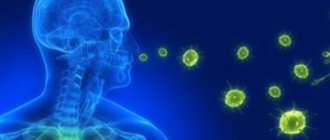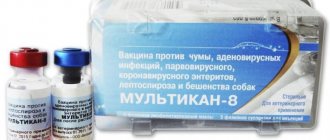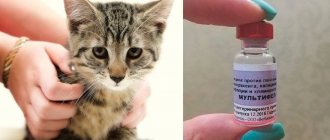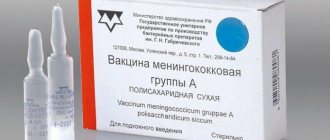From birth, children are susceptible to infection with various severe infectious viral diseases. For protection purposes, immunization is carried out. When studying the vaccination schedule, parents may encounter various abbreviations. For example, many people are interested in what the ZHPV vaccine means. Parents need to understand what drugs and what their child is immunized against.
What does the ZHPV vaccination mean: decoding
LPV stands for live mumps vaccine. It is used to protect against mumps. The disease is not fatal, but can lead to irreversible consequences: for example, infertility in boys and the development of diabetes.
Live cultural mumps vaccine
ZhPV is a domestically produced drug. The vaccine meets WHO requirements, but unfortunately it is not perfect and does not provide one hundred percent protection. Today, parents have a choice of means for immunization against mumps. Many people prefer imported polyvalent vaccinations.
Composition and mechanism of action of live mumps vaccine
Live cultured mumps vaccine is available in the form of a lyophilisate for the preparation of an injection solution. The drug is created by cultivating an attenuated strain of the Leningrad-3 mumps virus on a cell culture of quail embryos.
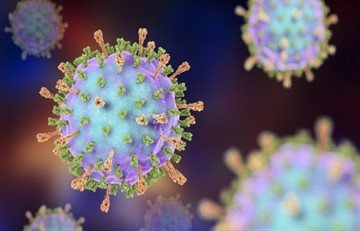
A single vaccination dose contains the following components:
- mumps virus – about 20,000 TCD50;
- gentamicin sulfate – 20 mcg;
- stabilizer consisting of 0.02 ml of gelatin solution (10%) and 0.08 ml of LS-18.
The introduction of ZHPV stimulates the body's production of antibodies to the mumps virus. Specific immunity is formed within 6-7 weeks after vaccination.
The principle of vaccination
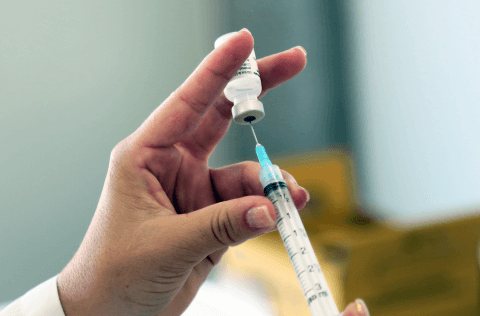
Immunity is the body’s defense system that fights viruses, harmful microorganisms, and foreign substances that can cause damage. Immunity happens:
- General – resists penetration into the body and reproduction of any pathogens.
- Specific – aimed at combating the causative agent of a specific pathology.
A person has general immunity from birth. Specific (acquired) - formed during life when the body produces antibodies to the causative agent of a certain disease. Vaccinations are aimed at developing specific immunity.
The body begins to produce immunoglobulins, which destroy substances foreign to it, approximately 5-7 days after the introduction of a vaccine with biomaterial of the causative agent of the disease. The amount of synthesized antibodies increases and reaches a maximum 3 weeks after administration of the drug. After this, the immunoglobulins disappear. However, the body has an immunological memory - lymphocytes are responsible for it. If the immune system encounters the causative agent of this disease in the future, it will recognize and destroy it.
Indications and contraindications for vaccination
The indication for the introduction of PVD is planned or emergency prevention of mumps. Suitable for use by babies from one year of age.
The drug has a number of contraindications:

- intolerance to aminoglycosides, quail or chicken eggs;
- state of primary immunodeficiency;
- hyperthermia;
- age under one year;
- the presence of an infectious or non-infectious disease;
- general poor health;
- cancer;
- lactation;
- mumps symptoms;
- blood pathology;
- development of adverse reactions and complications to a previously administered mumps vaccine;
- pregnancy;
- exacerbation of chronic diseases of internal organs.
Contraindications
Contraindications to vaccination are:
- allergy to vaccine components;
- primary immunodeficiency state (decreased immune activity);
- convulsions;
- acute infectious diseases;
- exacerbation of chronic pathologies;
- febrile conditions (fever, general malaise);
- diseases of the nervous system.
Before vaccination, the doctor carefully examines the patient and, if necessary, refers him for additional tests.
Instructions for use of mumps vaccine, culture-based live, dry
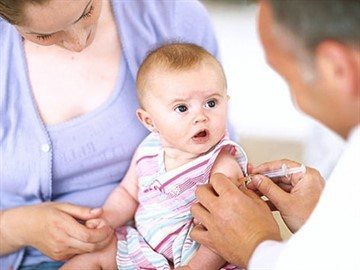
Children who have had mumps are not vaccinated. Emergency immunoprophylaxis is recommended for unvaccinated children, adolescents and adults who have had contact with a carrier of the virus: within 72 hours a VPV injection is given. The live mumps culture vaccine is injected subcutaneously into the area under the shoulder blade or into the outer area of the shoulder.
Since the drug is in the form of a powder, before use it is diluted with a special solvent at the rate of 0.5 ml per lyophilisate ampoule.
Not suitable for use:
- an ampoule with damaged integrity, without markings, with an unknown production date;
- a drug that has expired;
- an ampoule that was opened a long time ago;
- product stored under improper conditions.
Before using ZHPV, a physician must carefully examine the drug to ensure that it is unsuitable. The single dose for children and adults is the same and is equal to one ampoule.
Algorithm for using the mumps vaccine:
- treat ampoules with lyophilisate and solvent with an antiseptic (70% alcohol);
- open both containers;
- draw the solvent into a sterile syringe and transfer it to an ampoule with powder;
- stir the composition. You should get a homogeneous, transparent, pink liquid;
- take a new syringe and draw up the solution;
- wipe the injection site with alcohol;
- make a puncture and subcutaneously insert the gallbladder;
- remove the needle and re-treat the injection area with an antiseptic.
ZHPV can be combined with vaccines against rubella, measles, hepatitis B, DTP, OPV. If immunoglobulin has been introduced, then the person can be vaccinated only after a couple of months. After VPV, immunoglobulin should be used within two weeks.
The interval between vaccination against another infectious viral pathology and the vaccine against mumps should be at least a month.
Vaccination schedule
Below is the national calendar of preventive vaccinations (according to Order of the Ministry of Health of the Russian Federation No. 229 dated June 27, 2001) with amendments and additions made in accordance with Order of the Ministry of Health of the Russian Federation No. 673 dated October 30, 2007.
| Age | Name of vaccinations | Vaccines registered in Russia |
| newborns (in the first 24 hours) | 1st vaccination against hepatitis B1,2,3,4 | Engerix V, Euvax V, Combiotech, N-V-Vax II, Shanvak-V, Biovac-V, Eberbiovak NV, recombinant yeast, recombinant (rDNA) |
| 3-7 day | Vaccination against tuberculosis5 | BCG, BCG-m |
| 1 month | 2nd vaccination against hepatitis B3 (children at risk) | Engerix V, Euvax V, Combiotech, N-V-Vax II, Shanvak-V, Biovac-V, Eberbiovak NV, recombinant yeast, recombinant (rDNA) |
| 2 month | 3rd vaccination against hepatitis B3 (children at risk) | Engerix V, Euvax V, Combiotech, N-V-Vax II, Shanvak-V, Biovac-V, Eberbiovak NV, recombinant yeast, recombinant (rDNA) |
| 3 months | 1st vaccination against whooping cough, diphtheria and tetanus | DPT, ADS, Infanrix(AaKDS), Pentaxim(AaKDS) |
| 1st polio vaccination6 | Imovax polio | |
| 2nd vaccination against hepatitis B2 | Engerix V, Euvax V, Combiotech, N-V-Vax II, Shanvak-V, Biovac-V, Eberbiovak NV, recombinant yeast, recombinant (rDNA) | |
| 1st vaccination against Haemophilus influenzae type b* | Hiberix, Akt-Hib | |
| 4.5 months | 2nd vaccination against whooping cough, diphtheria and tetanus | DPT, ADS, Infanrix(AaKDS), Pentaxim(AaKDS) |
| 2nd polio vaccination6 | Imovax polio | |
| 2nd vaccination against Haemophilus influenzae type b* | Hiberix, Akt-Hib | |
| 6 months | 3rd vaccination against whooping cough, diphtheria and tetanus | DPT, ADS, Infanrix(AaKDS), Pentaxim(AaKDS) |
| 3rd polio vaccination6 | Imovax polio | |
| 3rd vaccination against Haemophilus influenzae type b* | Hiberix, Akt-Hib | |
| 3rd vaccination against hepatitis B2 | Engerix V, Euvax V, Combiotech, N-V-Vax II, Shanvak-V, Biovac-V, Eberbiovak NV, recombinant yeast, recombinant (rDNA) | |
| 12 months | Vaccination against measles, rubella and mumps | Priorix, MMR II, ZhKV, ZhPV, Rudivax, mumps-measles divaccine |
| 4th vaccination against hepatitis B3 (children at risk) | Engerix V, Euvax V, Combiotech, N-V-Vax II, Shanvak-V, Biovac-V, Eberbiovak NV, recombinant yeast, recombinant (rDNA) | |
| 18 months | 1st revaccination against whooping cough, diphtheria and tetanus | DPT, ADS, Infanrix(AaKDS), Pentaxim(AaKDS) |
| 1st revaccination against polio | Imovax polio, OPV | |
| First revaccination against Haemophilus influenzae type b* | Hiberix, Akt-Hib | |
| 20 months | 2nd revaccination against polio | Imovax polio, OPV |
| 6 years | 1st revaccination against measles, rubella, mumps | Priorix, MMR II, ZhKV, ZhPV, Rudivax, mumps-measles divaccine |
| 6-7 years | 2nd revaccination against diphtheria and tetanus | ADS-m |
| 7 years | 1st revaccination against tuberculosis5 | BCG-m |
| 14 years | 3rd revaccination against diphtheria, tetanus | ADS-m |
| 3rd revaccination against polio | Imovax polio, OPV | |
| revaccination against tuberculosis5 | BCG-m | |
| Adults | Revaccination against diphtheria, tetanus (every 10 years) | ADS-m |
| Children from 1 to 17 years old, adults from 18 to 55 years old, not previously vaccinated7 | Against hepatitis B1 (Engerix B, Euvax B, Combiotech, N-B-Vax II, Shanvak-B, Biovac-B, Eberbiovak HB, recombinant yeast, recombinant (rDNA)) | |
| Children from 1 to 17 years old, girls from 17 to 25 years old, not sick, not vaccinated, vaccinated once against rubella | Against rubella (Rudivax, rubella vaccine) | |
| Children attending a nursery; students of schools, higher and secondary vocational educational institutions; adults working in the service sector; pensioners over 60 years old | Against influenza (Influvac, Vaxigrip, Agrippal, Grippol, Begrivak, Inflexal, etc.) | |
| Adolescents and adults under 35 years of age who have not been sick, not vaccinated or do not have information about vaccination against measles Contacts of a person with measles who have not been ill, are not vaccinated and do not have information about vaccination against measles - no age limit | Against measles (GCV, Ruvax) | |
*Hib vaccination against Haemophilus influenzae type b is included in the vaccination schedule for infants in all developed and many developing countries. It made it possible to eliminate meningitis caused by Haemophilus influenzae type b and reduce the incidence of pneumonia by 25%. Hib vaccination is recommended by the Ministry of Health of the Russian Federation for children under 6 years of age, but is not included in the Russian vaccination calendar due to the lack of a domestic analogue of this vaccine.
1Vaccination against hepatitis B is carried out for all newborns in the first 24 hours of life, incl. children at risk: newborns from mothers who are carriers of HBsAg, patients with or who have had hepatitis B in the third trimester of pregnancy, who do not have test results for HBsAg, from risk groups for drug addiction; from families where there is a carrier of HBsAg, a patient with acute hepatitis B or chronic viral hepatitis (hereinafter referred to as risk groups).
2Vaccination against hepatitis B for newborns and all children not at risk is carried out according to the 0-3-6 scheme (1 dose - at the start of vaccination, 2nd dose - after 3 months, 3rd dose - 6 months after 1st vaccination).
3Vaccination against hepatitis B for newborns and children at risk is carried out according to the 0-1-2-12 scheme (1st dose - in the first 24 hours of life, 2nd - at the age of 1 month, 3rd - at the age of 2 months, ?-th dose – at the age of 12 months).
4For immunization against hepatitis B in children 1 year of age, it is recommended to use a vaccine that does not contain a preservative (merthiolate-thiomersal).
5Vaccination of newborns against tuberculosis is carried out with the BCG-m vaccine; Vaccination of newborns is carried out with the BCG vaccine in subjects of the Russian Federation with incidence rates above 80 per 100 thousand population, as well as in the presence of tuberculosis patients in the newborn’s environment.
Revaccination against tuberculosis is carried out for tuberculin-negative children not infected with Mycobacterium tuberculosis at the age of 7 and 14 years.
In constituent entities of the Russian Federation with tuberculosis incidence rates below 40 per 100 thousand population, revaccination against tuberculosis at 14 years of age is carried out for tuberculin-negative children who have not received the vaccine at 7 years of age.
6Vaccination against polio is carried out three times with inactivated polio vaccine to all children in the first year of life.
7Vaccination against hepatitis B is carried out according to the 0-1-6 scheme (1st dose - at the start of vaccination, 2nd dose - after 1 month, 3rd dose - 6 months after 1 vaccination) for children who did not receive vaccination before the age of 1 years and not belonging to risk groups, as well as adolescents and adults who have not been vaccinated previously.
Notes:
1. Vaccines (except BCG, BCG-m) used within the framework of the National Preventive Vaccination Calendar can be administered with an interval of 1 month or simultaneously with different syringes in different parts of the body.
2. If the start date for vaccinations is not met, they are carried out according to the schedules provided for by the National Preventive Vaccination Calendar and in accordance with the instructions for the use of drugs. Missing one vaccination from a series (hepatitis B, whooping cough, diphtheria, tetanus or polio) does not entail repeating the entire series; it is continued as if the required interval had been maintained. Immunization of children born from HIV-infected mothers is carried out within the framework of the National Preventive Vaccination Calendar and in accordance with the instructions for the use of vaccines and toxoids.
3. Immunization of children born from HIV-infected mothers is carried out taking into account the following factors: the type of vaccine (live or inactivated), the presence of immunodeficiency and concomitant diseases.
4. When immunizing children born from HIV-infected mothers, incl. HIV-infected children, regardless of the stage of the disease and the number of CD4+ lymphocytes, use all inactivated (including toxoids) and recombinant vaccines.
5. Live vaccines (ZHIV, ZHPV, Priorix, Varilrix, Mumps-measles divaccine, Rudivax, OPV, etc.) are administered to children with an established diagnosis of HIV infection in the absence of immunodeficiency in accordance with the National Preventive Vaccination Calendar. In the presence of immunodeficiency, the administration of live vaccines is CONTRAINDICATED.
6. 6 months after the administration of live vaccines, HIV-infected children undergo laboratory tests to assess the level of specific antibodies and, in their absence, undergo re-vaccination with preliminary laboratory monitoring of immune status.
In addition to vaccination carried out according to the preventive vaccination calendar, there is also vaccination for epidemic indications:
| Name of infection | Name of vaccines | Recommended age |
| Hepatitis A | Havrix(720/1440), Avaxim | from 1 year |
| Meningitis | Meningo A+S, Mencevac ASWY | from 18 months |
| Tick-borne encephalitis | FSME-Immune injection, Encepur | from 6 months |
| Flu | Vaxigrip, Influvac. Agrippal, Begrivak, Fluarix, Grippol | from 6 months |
| Pneumonia | Prevenar Pneumo 23 | from 2 months from 2 years |
| Rabies | Rabipur, KOKAV | from 5 years old |
| Tularemia | Tularemia vaccine live dry | from 7 years old |
| Yellow fever | Dry yellow fever vaccine | from 9 months |
| Typhoid fever | Tifim Vi, VIANVAK | from 5 years old |
| Q fever | Live dry Q fever vaccine | from 14 years old |
| anthrax | Dry anthrax vaccine | from 14 years old |
| Brucellosis | Dry brucellosis vaccine | from 18 years old |
Share
Reaction to vaccination and complications
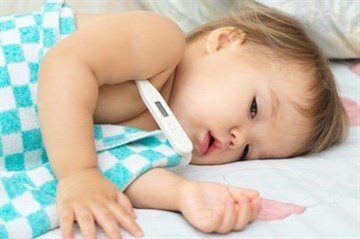
After the JPV enters the blood, the body begins to actively produce antibodies. This process affects your well-being. A person usually develops a low-grade fever, headache and weakness.
The puncture site may also become red, swollen and painful. All this is considered a variant of the norm and indicates the beginning of the formation of specific immunity against mumps. After a few days the condition improves.
Some pediatricians recommend taking antihistamines and antipyretics a couple of days before and after immunization to ensure good tolerability of VPV. It happens that during the post-vaccination period it is asymptomatic.
If the general condition is aggravated or poor health persists for more than five days, then most likely the person has developed adverse reactions from VPV.
The list of post-vaccination complications includes:
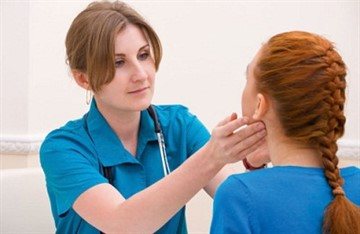
- enlargement and inflammation of the lymph nodes;
- high fever;
- allergies (Quincke's edema, body rash, anaphylaxis);
- serous meningitis.
Allergic reactions develop extremely rarely. They usually appear in the first two days and are typical for children with problems with the immune system.
Serous meningitis is also rare and has a benign course. All adverse reactions from PVD are reversible, but require timely medical attention.
For severe hyperthermia, antipyretics are prescribed, and for allergies, antihistamines are prescribed. If symptoms of serous meningitis appear, then differential diagnosis is carried out.
Will I have side effects after the second dose?
Side effects are more likely to occur and may be more noticeable after the second dose of the vaccine. The Pfizer-BioNTech and Moderna vaccines have almost the same side effects, but they don't last long—one to three days. The most common side effects include arm pain, weakness (feeling tired), headache, aches and fever. Side effects are a good sign: they indicate that the vaccine is working and priming the immune system. Serious side effects are rare and can be treated.
If possible, get vaccinated before the weekend in case you need extra rest after your second dose. Do not forget that you must strictly adhere to the recommended vaccination schedule . The second dose of the Pfizer vaccine should be received exactly 21 days after the first, and the second dose of the Moderna vaccine should be received exactly 28 days after the first.
A third dose of the COVID-19 vaccine is recommended for people with cancer and weakened immune systems.
You may have heard that the CDC is recommending a third dose of the COVID-19 vaccine for people who are immunocompromised, including some people with cancer.
Learn more
to come back to the beginning
Price and analogues
Mumps vaccination for children according to the approved plan is carried out in local clinics and city hospitals free of charge. In private clinics and medical centers, immunization is performed for a certain amount of money. The price varies from 400 to 900 rubles.
The price includes the purchase of PVD, a medical examination before vaccination and the injection service. The price depends on the level of the establishment and the need for additional examination. To save on immunization, you can buy VPV at a pharmacy or online store and come to the medical center with your drug. In this case, you will only have to pay for the medical examination and injection.
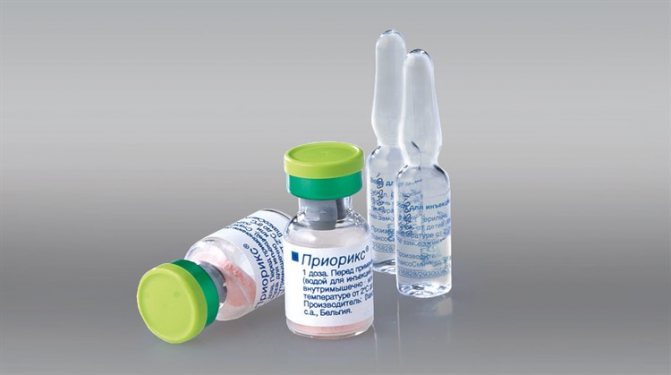
Priorix vaccine
If JPV is poorly tolerated or this drug is not available in the treatment room, then vaccination against mumps can be carried out with another medication.
Analogs of live mumps culture vaccination are:
- MMRII . The drug contains live rubella, mumps and measles viruses. Available in the form of a lyophilisate;
- Priorix . This is a combination remedy against mumps, rubella and measles.
Polyvalent vaccinations are much easier for children to tolerate. In addition, they simultaneously protect against several infectious viral diseases. Therefore, they are more often chosen for routine prevention.
For emergency protection against mumps, it is better to use ZhPV.
Who needs vaccinations and when?
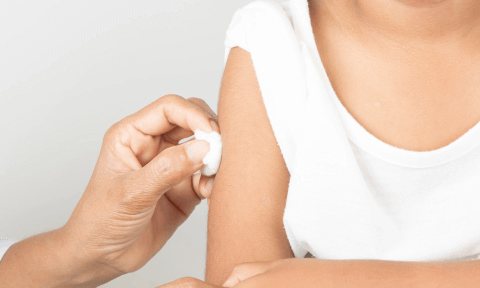
Vaccinations are given to both children and adults. They are:
- Mandatory - help to avoid infection with dangerous diseases throughout your life.
- Additional – vaccination is carried out as additional protection during epidemics, before traveling to exotic countries, and when planning pregnancy.
Children are vaccinated according to the Russian calendar of preventive vaccinations. It contains a list of vaccinations recommended for each child and the timing of their implementation.
However, it should be remembered that the calendar is only a recommendation. The vaccination plan for a specific patient is drawn up by a doctor, based on the presence of certain contraindications, characteristics of the body and other factors.
Reviews about vaccination against mumps
Doctors recommend mumps vaccination for children and unvaccinated adults. Experts leave conflicting reviews about the drug ZhPV. Some argue that the vaccine is effective and well tolerated.
Others note its high reactogenicity.
Patients also speak differently about PVD. The vaccine is tolerated normally by most people and contributes to the formation of strong immunity. For some, it causes a number of serious complications. Reviews from doctors and patients about the live mumps vaccine:
- Andrey. I have been working as a pediatrician at a local clinic for about 6 years. I consider vaccination the only effective method of protection against infectious viral pathologies and their consequences. Mumps, among many childhood diseases, is not fatal, but can lead to infertility and diabetes. Therefore, I strongly recommend that parents vaccinate their children. In our clinic, immunization is carried out by ZhPV. The drug is generally well tolerated in most cases. For those who want to additionally vaccinate their child against measles and rubella, I advise you to choose Priorix;
- Catherine . My son was vaccinated against mumps by 1 year. After the manipulation, he developed a fever and a rash all over his body. At first, I thought it was a natural reaction of the body. But when my condition began to worsen, I sought medical help. The doctor said that the boy has an individual intolerance to VPV. I will no longer vaccinate my son against mumps. But now I’m worried that he won’t contract mumps, because the disease causes male infertility;
- Vitaly . As a child, I was vaccinated against mumps. According to my parents, I did not have any adverse reactions. My daughter had hives after this vaccination. Each person's body reacts differently to a live vaccine. To avoid complications from immunization, I recommend trusting doctors and following their instructions.
When deciding whether to get vaccinated against mumps, you should not rely entirely on reviews. Each organism is individual: a vaccine may be suitable for one, but not for another. The feasibility of immunization should be determined by the doctor based on an examination of the patient and a study of his medical history.
Video on the topic
About vaccination of children against mumps, measles and rubella in the video:
Thus, JPV is a live mumps vaccine, which is intended to form specific immunity against mumps pathogens. The drug is quite reactogenic and can cause allergies and a number of other complications in particularly sensitive individuals.
To minimize side effects, it is worth undergoing an examination before the procedure and following the doctor’s recommendations in the post-vaccination period. If complications develop, it is important not to self-medicate, but to immediately seek medical help.
